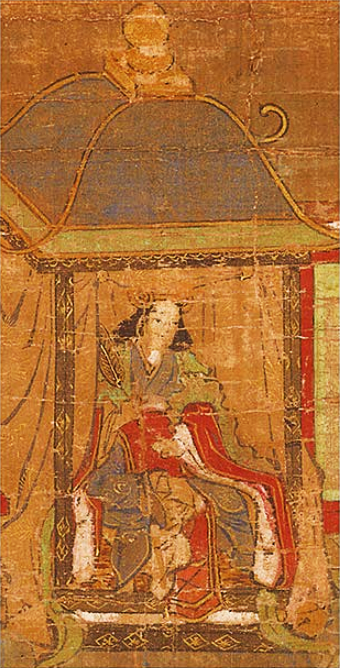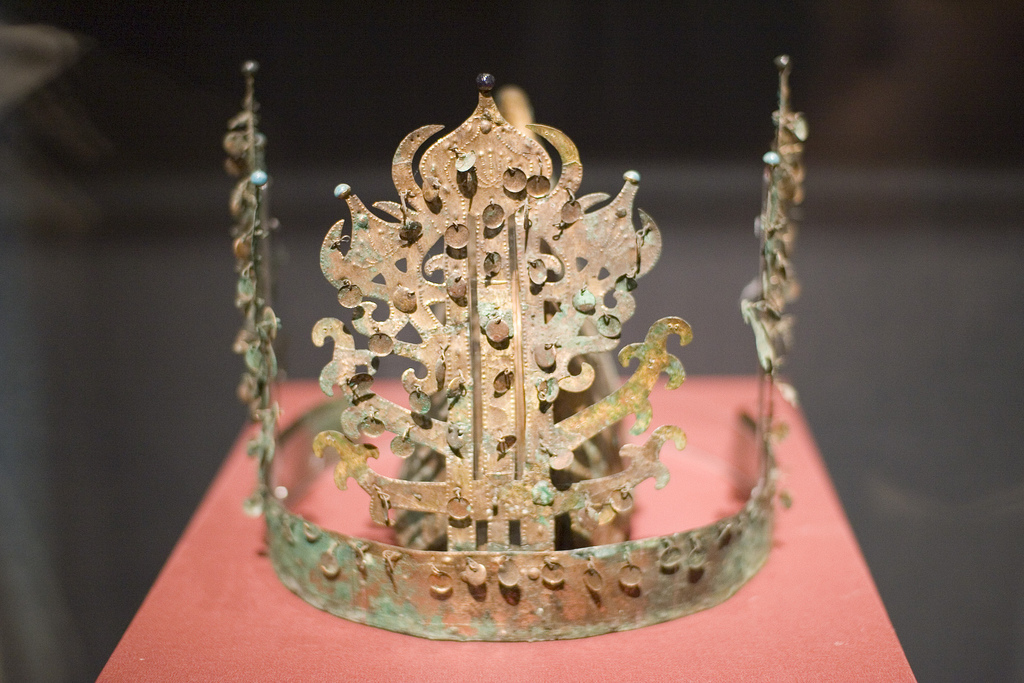|
Hyechong
Hyechong also known as Esō was a Buddhist monk from Baekje who travelled to Japan in the Asuka period to transmit Buddhism. Traveling to Japan in 595 (the 3rd year of Empress Suiko), he preached Buddhism. When , which is now or was completed in 596, the monk lived with the priest Eji from Goguryeo, and together they were called .''Nihon Shoki The or , sometimes translated as ''The Chronicles of Japan'', is the second-oldest book of classical Japanese history. It is more elaborate and detailed than the , the oldest, and has proven to be an important tool for historians and archaeol ...'', volumes 22, Story of Suiko. References Baekje Buddhist monks Sanron Buddhist monks Buddhist clergy of the Asuka period {{Japan-reli-bio-stub ... [...More Info...] [...Related Items...] OR: [Wikipedia] [Google] [Baidu] |
Asuka Period
The was a period in the history of Japan lasting from 538 to 710, although its beginning could be said to overlap with the preceding Kofun period. The Yamato period, Yamato polity evolved greatly during the Asuka period, which is named after the Asuka, Yamato, Asuka region, about south of the modern city of Nara, Nara, Nara. The Asuka period is characterized by its significant Japanese art, artistic, social, and political transformations, having their origins in the late Kofun period. The introduction of Buddhism marked a change in Japanese society. The Asuka period is also distinguished by the change in the name of the country from to . Naming The term "Asuka period" was first used to describe a period in the history of Japanese fine-arts and architecture. It was proposed by fine-arts scholars and Okakura Kakuzō around 1900. Sekino dated the Asuka period as ending with the Taika Reform of 646. Okakura, however, saw it as ending with the transfer of the capital to the Heijō ... [...More Info...] [...Related Items...] OR: [Wikipedia] [Google] [Baidu] |
Hyeja
Hyeja (Japanese: ) was the first priest who came across the sea from Goguryeo to Japan in the Asuka period, 595. He was a tutor of Buddhism to Shōtoku Taishi. He propagated Buddhism in Japan. He lived at Hōkō-ji (法興寺 Hōkō temple), currently Ango-in (安居院) or Asuka-dera (飛鳥寺 Asuka temple), with priest Esō who came from Baekje. They were called "Sanpō no Tōryō" (三宝の棟梁 The leader of three treasures). In 615, he went back to the home country, Goguryeo, with an annotated book of the Buddhist scriptures, which was written by Shōtoku Taishi. He heard the news that Shōtoku Taishi died on February 22, 622. He grieved very much and took an oath of meeting Shōtoku Taishi again in the Pure Land (浄土 celestial realm) on the same day of next year. He achieved an oath.''Nihon Shoki The or , sometimes translated as ''The Chronicles of Japan'', is the second-oldest book of classical Japanese history. It is more elaborate and detailed than the , t ... [...More Info...] [...Related Items...] OR: [Wikipedia] [Google] [Baidu] |
Baekje
Baekje or Paekche (; ) was a Korean kingdom located in southwestern Korea from 18 BCE to 660 CE. It was one of the Three Kingdoms of Korea, together with Goguryeo and Silla. While the three kingdoms were in separate existence, Baekje had the highest population of approximately 3,800,000 people (760,000 households), which was much larger than that of Silla (850,000 people) and similar to that of Goguryeo (3,500,000 people). Baekje was founded by Onjo of Baekje, Onjo, the third son of Goguryeo's founder King Dongmyeong of Goguryeo, Jumong and Soseono, at Wiryeseong (present-day southern Seoul). Baekje, like Goguryeo, claimed to succeed Buyeo kingdom, Buyeo, a state established in present-day Manchuria around the time of Gojoseon's fall. Baekje alternately battled and allied with Goguryeo and Silla as the three kingdoms expanded control over the peninsula. At its peak in the 4th century, Baekje controlled most of the western Korean peninsula, as far north as Pyongyang, and may ha ... [...More Info...] [...Related Items...] OR: [Wikipedia] [Google] [Baidu] |
Empress Suiko
(554 – 15 April 628) was the 33rd monarch of Japan,Imperial Household Agency (''Kunaichō''): She introduced Buddhism in Japan and built many Buddhist temples, but she held the balance between Buddhism and Shintoism. Under her rule, Japan was the superpower in Asia, Silla paid tribute to Japan. She also reorganized the legal system and laws, bringing a peaceful era in the country. She is credited with building Japan's infrastructure, economy and culture. Empress Suiko was noted for her wisdom as a ruler推古天皇 (33)/ref> and the country's first and longest-reigning empress regnant, according to the traditional order of succession. Suiko reigned from 593 until her death in 628. Traditional narrative Before her ascension to the Chrysanthemum Throne, her personal name (her ''imina'') was Mikekashiya-hime-no-mikoto, also Toyomike Kashikiya hime no Mikoto. Empress Suiko had several names including Princess Nukatabe and (possibly posthumously) Toyomike Kashikiya. She was a ... [...More Info...] [...Related Items...] OR: [Wikipedia] [Google] [Baidu] |
Asuka-dera
, also known as , is a Buddhist temple located in the village of Asuka, Nara Prefecture, Japan. It currently belongs to the Shingon-shū Buzan-ha sect. Asuka-dera is regarded as one of the oldest temples in Japan. Its precincts were designated a National Historic Site in 1966. History Asuka-dera (Hōkō-ji) was built as the family temple of the Soga clan between the end of the 6th century and the beginning of the 7th century, and was the first Buddhist temple in Japan to have a fully-fledged temple complex. The history of the temple's construction from its inception to its founding is described in the ''Nihon Shoki'', the ''Gangō-ji Garan Engi'' and ''Ryūki Zaizaichō'', as well as other historical sources. According to the ''Nihon Shoki'', the construction of Hōkō-ji (Asuka-dera) was instigated by Soga no Umako in the second year of the reign of Emperor Yōmei (587). Umako was opposed to the anti-Buddhist Mononobe no Moriya. Soga no Umako vowed to build a temple in As ... [...More Info...] [...Related Items...] OR: [Wikipedia] [Google] [Baidu] |
Goguryeo
Goguryeo (37 BC – 668 AD) (; ; Old Korean: Guryeo) also later known as Goryeo (; ; Middle Korean: 고ᇢ롕〮, ''kwòwlyéy''), was a Korean kingdom which was located on the northern and central parts of the Korea, Korean Peninsula and the southern and central parts of modern-day Northeast China (Manchuria). At its peak of power, Goguryeo encompassed most of the Korean Peninsula and large parts of Manchuria, along with parts of eastern Mongolia, Inner Mongolia, and modern-day Russia. Along with Baekje and Silla, Goguryeo was one of the Three Kingdoms of Korea. It was an active participant in the power struggle for control of the Korean peninsula and was also associated with the foreign affairs of neighboring polities in China and Yamato period, Japan. Goguryeo was one of the great powers in East Asia until its defeat by a Silla–Tang alliance in 668 after prolonged exhaustion and internal strife following the death of Yeon Gaesomun. After its fall, its territory was ... [...More Info...] [...Related Items...] OR: [Wikipedia] [Google] [Baidu] |
Nihon Shoki
The or , sometimes translated as ''The Chronicles of Japan'', is the second-oldest book of classical Japanese history. It is more elaborate and detailed than the , the oldest, and has proven to be an important tool for historians and archaeologists as it includes the most complete extant historical record of ancient Japan. The was finished in 720 under the editorial supervision of Prince Toneri with the assistance of Ō no Yasumaro and presented to Empress Genshō. The book is also a reflection of Chinese influence on Japanese civilization. In Japan, the Sinicized court wanted written history that could be compared with the annals of the Chinese. The begins with the Japanese creation myth, explaining the origin of the world and the first seven generations of divine beings (starting with Kuninotokotachi), and goes on with a number of myths as does the , but continues its account through to events of the 8th century. It is believed to record accurately the latter reig ... [...More Info...] [...Related Items...] OR: [Wikipedia] [Google] [Baidu] |
Baekje Buddhist Monks
Baekje or Paekche (; ) was a Korean kingdom located in southwestern Korea from 18 BCE to 660 CE. It was one of the Three Kingdoms of Korea, together with Goguryeo and Silla. While the three kingdoms were in separate existence, Baekje had the highest population of approximately 3,800,000 people (760,000 households), which was much larger than that of Silla (850,000 people) and similar to that of Goguryeo (3,500,000 people). Baekje was founded by Onjo, the third son of Goguryeo's founder Jumong and Soseono, at Wiryeseong (present-day southern Seoul). Baekje, like Goguryeo, claimed to succeed Buyeo, a state established in present-day Manchuria around the time of Gojoseon's fall. Baekje alternately battled and allied with Goguryeo and Silla as the three kingdoms expanded control over the peninsula. At its peak in the 4th century, Baekje controlled most of the western Korean peninsula, as far north as Pyongyang, and may have even held territories in China, such as in Liaoxi, thoug ... [...More Info...] [...Related Items...] OR: [Wikipedia] [Google] [Baidu] |





